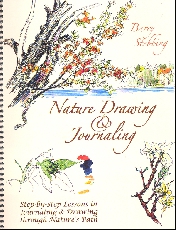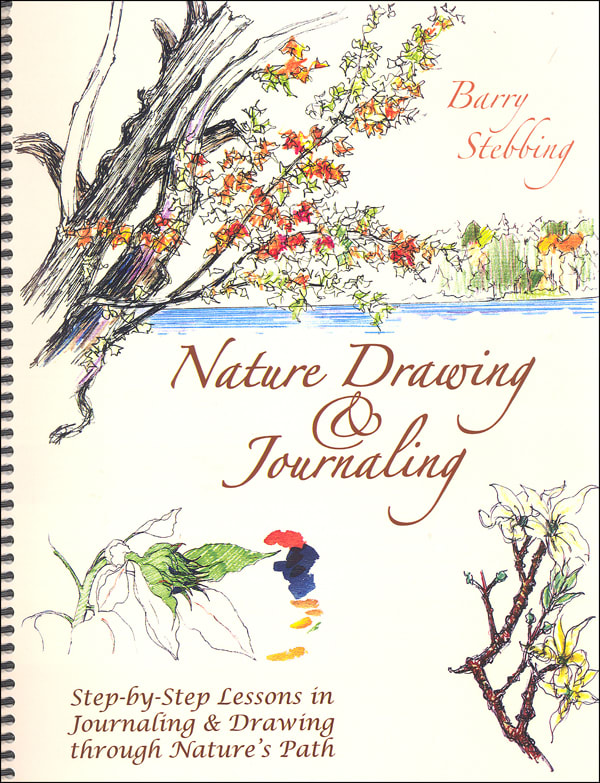Nature Drawing and Journaling, subtitled Step-by-Step Lessons in Journaling & Drawing through Nature's Path, should appeal especially to Charlotte Mason fans since nature study, drawing, and writing are among her key recommendations. Written for teens and adults, this book includes instruction in the basics of journaling, gathering your supplies, preparing your journal, and tips on working outdoors. It features inspirational drawings from Barry Stebbing's own journals and instructions for the various drawing projects. I love the way he weaves in gentle instructions that give you the sense of having a mentor alongside.
The book is presented as a series of 47 lessons that walk you through the preparatory steps before moving out into nature itself. Lessons work through different aspects of nature: color, lines, plants, trees, vines, flowers, landscape elements, weather effects, animals, birds, and insects. Concluding lessons on "barns and shanties" teach how to draw aged and rustic constructions.
The 126 pages of text are followed by about 30 pages of a "Journal Primer." The first three pages each have a section with lines, but the remaining pages are blank for you to determine your own creative layout.
If you start to read through this book, you are likely to be inspired to gather your pens, pencils, markers, journal, and camp chair and head for the woods to create your own journal.
Stebbing has also produced the Nature Drawing & Journaling DVD set with three discs, each containing two lessons of about one hour each. Each lesson generally has a number of art exercises along with some instruction and encouragement on journaling. The basic goal is similar to that of the book—to teach artistic techniques as well as how to write journal entries. While the two formats overlap with some of their content, lessons are presented differently and they don't align directly with one another.
The value of the DVD course is that it shows Stebbing teaching drawing techniques and use of the various media. He also works through some drawing activities that are not included in the book. The DVDs teach each lesson step-by-step while the book provides very brief instructions for most exercises. The DVDs surely make the entire process much more manageable for the fledgling artist, so I would suggest starting with the DVDs unless you already have some artistic proficiency. DVD lessons can be completed indoors, although Stebbing does suggest a few optional exercises that students might repeat in some fashion outside.
The DVDs provide a great starting point for those who need more guidance, but the exercises in the book offer many more topics for drawing with loads of illustrations. While the early lessons in the book can be completed indoors, you will soon need to be gathering your supplies and moving outdoors for many of the lessons.
Either the book or the DVDs can be used on their own. You can probably also use the DVDs with younger students (maybe about fifth grade and above) because of the step-by-step lessons. Older students and adults with minimal to moderate artistic skills will probably benefit most from having both resources. And those with moderate to advanced art skills should do fine with just the book.









